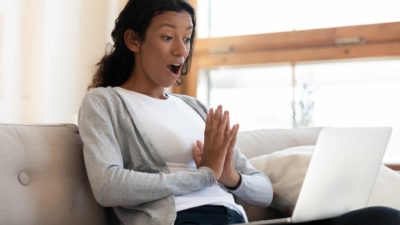This article was originally published on Fool.com. All figures quoted in US dollars unless otherwise stated.
High inflation makes it very difficult to invest, particularly for those of us whose salaries aren't keeping up with the escalating costs we're facing. Almost paradoxically though, that same inflation makes it critically important to invest. After all, over the long run, owning shares in companies that are able to adapt, profit, and grow despite that inflation just might be your best chance of protecting your own purchasing power.
The need to keep investing despite those challenges does raise a key question: How exactly do you go about investing during periods of high inflation? When all is said and done, it takes a bit more planning and perseverance than investing in ordinary times, but the tactics involved are very similar.
Keep your costs down
First and foremost, figure out how to get your costs down. Energy costs have been a key driver of the recent inflation we've felt. On that front, consider what you can do to reduce your direct energy usage. Can you raise your thermostat a few degrees this summer to cut down on air conditioning bills? What about consolidating your trips, taking the bus, or carpooling more to cut down on gas costs? Do you still have incandescent lights that can be converted to LEDs to reduce their operating costs?
Beyond energy, food has been another pain point from an inflation perspective. Switching to generics and buying in bulk -- especially foods that don't spoil quickly -- are time-tested approaches to saving money on food. In addition, taking advantage of free food available to you (such as office coffee) is another way to save money on food. On a related note, cooking more of your own meals rather than relying on take out or restaurants is another approach to save on the costs of eating.
There are often even ways to combine savings in food and energy together. For instance, if you cook in big batches, you can often save energy (and time) versus cooking each meal individually.
Unfortunately, inflation is taking a toll on costs well beyond just food and energy. That's especially true when it comes to things that have to be transported, thanks in large part to fuel prices that recently hit an all-time high. As a result, it's often important to find ways to cut back on other costs, as well as food and energy.
If you have a car, for instance, keeping a used one running for longer is often cheaper than trying to buy a new one. That's especially true these days, when there's a shortage of car parts, making new vehicles scarcer and more expensive than they used to be. Likewise, repairs may be a cheaper option than replacements for many major appliances like ovens or refrigerators.
Get your debts under control
Once you've reduced your ongoing costs, the next big hurdle is paying down your debts. The most efficient way to do that is something known as the debt avalanche method. To use that approach, you line up all your debts in order from highest interest rate to lowest. On all your debts except the highest interest one, you pay the minimum. On that highest-interest-rate debt, you pay as much as you can above that minimum until it's completely paid off.
Then, once that's paid off, you take the money that had been going toward that payment and add it to your new highest-interest-rate debt. Keep it up until (nearly) all your debts are paid off.
Some debts, such as your mortgage, might be worth keeping out of your accelerated payoff. It only makes sense to do that, though, if your debt is at a very low interest rate, has a small enough payment that it doesn't disrupt your life, and the debt plays a clear purpose for your future. Unless all three of those are true, then you're very likely better off including that debt into your avalanche payoff process before investing.
Make sure you have an emergency fund. Then invest!
By cutting your everyday costs, you free up money to pay down your debts. By completely eliminating many of your debts, you free up even more money. Once those things are true, then you've got a decent chunk of money freed up each month that you can sock away for your future.
Before you start aggressively investing in stocks, however, first make sure you've got a decently stocked emergency fund. Having around three to six months of expenses in one to handle the unexpected expenses that come up can go a long way toward keeping you from having to sell your shares while they're down. The good news on that front, though, is that by getting your costs down and your debts paid off, your emergency fund doesn't have to be as big as it otherwise would have been.
Once that emergency fund is in place, you're ready and able to put the cash flow you've freed up toward investing. Today's inflation may make it tougher to get there than it used to be, but it also makes it more important than ever. So get started on your plan today, and improve your chances of being able to keep on investing, even in today's inflationary environment.
This article was originally published on Fool.com. All figures quoted in US dollars unless otherwise stated.









